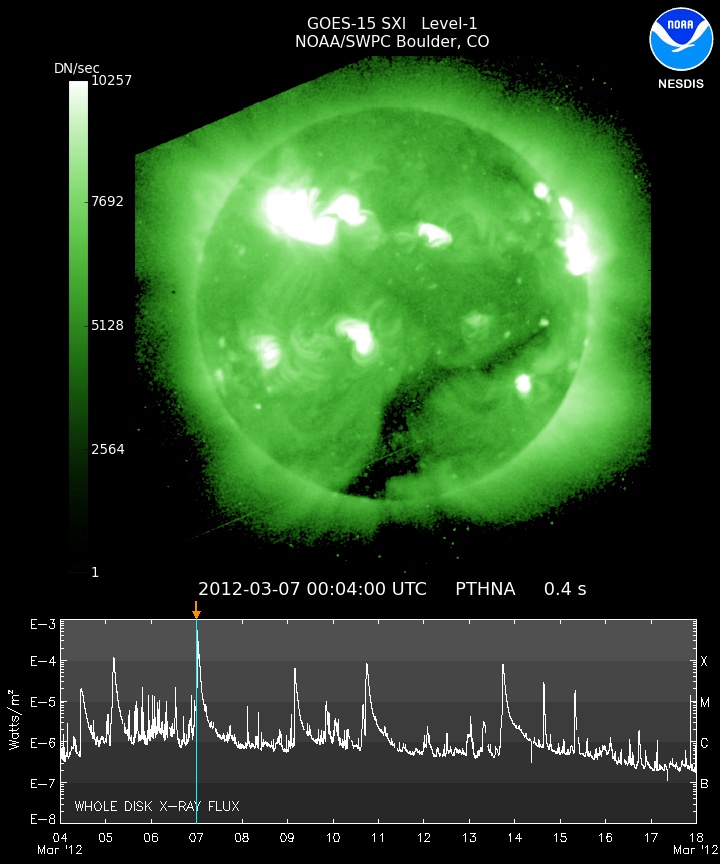| Solar Features - Solar Flares |
 |
A solar flare is a short-lived sudden increase in the intensity of radiation emitted
in the neighborhood of sunspots. For many years it was best monitored in the H-alpha
wavelength and occurs in the chromosphere, though occasionally white light flares
are seen in the photosphere. In modern times the solar X-ray wavelengths are monitored
via satellite for solar flares. Flares are characterized by a rise time of the order
of minutes and a decay time of the order of tens of minutes. The total energy expended
in a typical flare is about 1030 ergs; the magnetic field is extraordinarily high
reaching values of 100 to 10,000 gauss. Optical flares in H-alpha are usually accompanied
by radio and X-ray bursts and occasionally by high-energy particle emissions. The
optical brightness and size of the flare are indicated by a two-character code called
"importance." The first character, a number from 1 to 4, indicates the apparent area.
For areas of less than 1, an "S" is used to designate a subflare. The second character
indicates relative brilliance: B for bright, N for normal and F for faint. A general
discussion of solar flares is found in Svestka [1976]. The NOAA National Centers for
Environmental Information (formerly NGDC) holds archives for about 80 stations, covering
the period 1938 to the present. Currently 5 stations send their data to NGDC Boulder
on a routine monthly basis -- the current main observing emphasis for Space Weather
has transitioned to Coronal Mass Ejections (CMEs) which directly impact the Earth's
geomagnetic field. Solar flares impact the Earth's upper atmosphere and can eject
high energy particles that can cause satellite failures. The flare reports were processed
and published in the monthly report "Solar-Geophysical Data" and in a different format
in the IAU "Quarterly Bulletin on Solar Activity." |
|